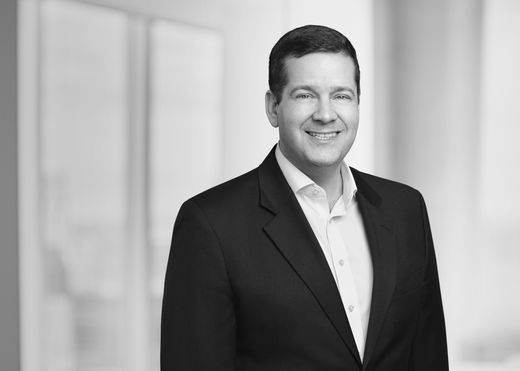Latest Opportunity Zone Rules Significantly Expand Types of Qualifying Investments

Key Points
- If finalized in its current form, the second tranche of proposed opportunity zone regulations will make it possible for a broad variety of projects and businesses to meet the 70-percent “substantially all” tangible property test and the 50-percent gross income requirement necessary for an opportunity zone (OZ) business to attract fund investors seeking OZ tax benefits.
- In particular, the most recent proposed regulations clarified that real estate located in an OZ can be leased to an OZ business (in some cases, even if the business is a related party) and constitute qualified OZ business property with no substantial improvement requirement. Further, property located in an OZ that has been abandoned for at least five years could also constitute qualified OZ business property with no substantial improvement requirement.
- The leasing flexibility will enable property owners in OZs to retain ownership of the property and enter into either a long-term ground lease or a concession agreement with an OZ fund or business.
- While real estate development (commercial, residential or mixed-use) has always been an obvious OZ investment, these new rules would make it easier for start-up operating businesses that primarily provide services to satisfy the 50-percent gross income requirement as long as at least half of the services (tested either by hours or amounts paid) are performed in the OZ.
- These favorable rules should make it possible for OZ investors to join forces with the public sector to develop much-needed infrastructure and ongoing services (i.e., bridges, schools, hospitals, water treatment systems, transit-oriented development and parking) through public-private partnerships (P3s) where the public sector can remain the owner of the underlying property while the OZ business, backed by OZ investors, builds or improves a facility that it then operates pursuant to a fixed-term concession agreement.
- The regulations also contain guidance on so-called inclusion events—transactions that will require the OZ investor to pay tax on some portion of the previously deferred gain (which are generally transactions that would reduce or terminate the investor’s interest in the OZ fund)—and make it possible for an OZ fund to sell a qualifying asset and have a full year to reinvest the proceeds from the sale without running afoul of the 90-percent asset test.
- Additionally, the rules provide generous thresholds that may allow preexisting businesses (either those currently located in an OZ or those wishing to expand their jurisdiction) to grow by taking advantage of OZ-backed equity financing.
While the opportunity zone (OZ) regime found in Internal Revenue Code Sections 1400Z-1 and 1400Z-2 was signed into law in December 2017, it left gaping holes to be fleshed out in regulations. Many economically distressed communities and investors hoping to leverage their dollars to aid revitalization efforts have been sitting on the sidelines waiting for fundamental questions to be answered in published guidance.
Among other things, the first tranche of regulations (REG-115420-18), issued October 19, 2018, provided a generous working capital safe harbor (that gives qualified OZ businesses 31 months before they will be limited to holding less than 5 percent in nonqualified financial assets, such as cash and cash equivalents) and limited the substantial improvement requirement to only doubling the basis of existing buildings (so that land automatically constitutes qualified OZ business property, without requiring that it be substantially improved). (For our prior alert, see https://www.akingump.com/en/news-insights/tax-alert-opportunity-zones-new-guidance-sheds-light-on-how.html.)
The second tranche of regulations (REG-120186-18), issued April 17, 2019, provides needed clarity on a number of important issues. These include:
- Establishing safe harbors for satisfying the situs requirement in the 50-percent gross income test that are divorced from customer location. The test requires that at least 50 percent of the gross income of a qualified OZ business be derived from the active conduct of a trade or business in the qualified opportunity zone. We now know that, for example, sales of internet services (such as software as a service (SaaS)) to customers outside of the OZ will qualify if at least half of the hours spent by software engineers developing the applications were in a campus located in an OZ.
- Providing that the value of leased property in an OZ should be included in both the numerator and denominator of both the 90-percent asset test (for the OZ fund) and 70-percent “substantially all” tangible property test (for the lower-tier qualified OZ business). This means that such property constitutes qualified OZ business property even though it was not acquired by purchase and even though it was neither original use nor substantially improved. The Treasury Department has made the decision that even though this enables a qualified OZ business to lease existing real property in an OZ without improving it, such a policy “encourages economic activity within qualified opportunity zones while reducing the potential distortions between owned and leased property that may occur under other options.”
Background on the Various Tests
As a quick reminder, there are a number of requirements that need to be satisfied in order for an OZ fund or business to afford investors the sought-after tax benefits.
The 90-Percent Asset Test at the OZ Fund Level – An OZ fund must ensure semi-annually that 90 percent of its assets are invested in qualified OZ property (including stock or partnership interests in a qualified OZ business). Relief is provided that allows an OZ fund to exclude from the 90-percent asset test any investments received in the preceding six months as long as the new investments are held in cash or cash equivalents. In addition, the new regulations provide that when an OZ fund sells qualifying assets, it can take up to 12 months to reinvest the proceeds from such a sale back into qualified OZ property before the OZ fund must satisfy the 90-percent asset test with respect to those proceeds.
While the rules provide that such sales by the OZ fund do not impact the investors’ holding periods, the Treasury Department is requesting guidance on how it might provide for nonrecognition treatment at the investor level with respect to any reinvested gains from the sale of such property that occurs before the 10-year holding period is satisfied.
(A new election will make it possible for an OZ fund to wind down once the 10-year holding period has passed by selling its assets and distributing all of the proceeds out to investors in a way that allows for such amounts to be excluded from the investors’ gross income so that the gain on their OZ fund investments is tax-free.)
The regulations indicate that Treasury is concerned it may not have the authority to turn off the regular gain recognition rules that would ordinarily require investors (assuming they are partners in an OZ fund that is a partnership) to recognize gain or loss on a sale of the partnership’s asset in cases where the sale occurs before the 10-year holding period has been satisfied (even when the gains are reinvested in qualified OZ property) given the flow-through nature of partnership taxation.
The 70-Percent “Substantially All” Tangible Property Test at the Qualified OZ Business Level – A qualified OZ business must ensure that at least 70 percent of its owned or leased tangible property is either new (original use) or substantially improved and purchased from an unrelated party after December 31, 2017. But, there are two other parts to this test. The qualified OZ business must also ensure that “during substantially all of the [business’s] holding period for such property, substantially all of the use of such property was in a qualified opportunity zone.” These last two “substantially all” thresholds were previously undefined.
The new regulations provide that “substantially all” in the context of holding period and usage are 90 percent and 70 percent, respectively. This means that while the regulations are designed to ensure that “a consequential amount of tangible property” will be used in a qualified OZ—that consequential amount turns out to be, theoretically speaking, as low as 40 percent. That is because 90 percent (the asset test at the OZ fund level) times 70 percent (the amount of tangible property at the qualified OZ business level) times 90 percent (the holding period for such property) times 70 percent (the use of such property within the OZ) is just under 40 percent.
The regulations provide that the substantially all thresholds were designed in part to allow “flexibility to business operations so as not to significantly distort the types of businesses that can qualify for opportunity zone funds.”
The 50-Percent Gross Income Requirement at the Qualified OZ Business Level – A qualified OZ business must ensure that at least half of its total gross income is derived from the active conduct of the business in the OZ. The new regulations contain safe harbors that should make it easier for more businesses to satisfy this requirement. However, at their election, taxpayers are still able to interpret the 50-percent gross income test as requiring that a majority of the sales of the business be located within the OZ under a general facts and circumstances analysis.
The Intangibles Limitation at the Qualified OZ Business – A qualified OZ business must use a substantial portion of its intangible property in the active conduct of its business in the OZ. The new regulations define substantial portion as at least 40 percent for this purpose. This relatively low threshold should facilitate the formation of qualified OZ businesses engaged in science, technology, engineering and math (STEM) fields, as they will presumably have the flexibility to use a larger portion of their intangibles outside of the OZ and to hold such assets passively.
The Non-Qualified Financial Property Limitation (Excluding Working Capital) at the Qualified OZ Business Level – Generally speaking, less than 5 percent of the property of the qualified OZ business can be non-qualified financial property (such as cash and cash equivalents). However the working capital safe harbor provided for the in first set of regulations generally gave qualified OZ businesses 31 months before they will be subject to this limitation, as long as they spent the cash only on acquiring, constructing or rehabilitating tangible business property. The new rules expand the relief to cash that is held to pay for operations connected to the development of a trade or business, including salaries.
This opens the door for all types of businesses (i.e., fast-food restaurants, tech companies) to take their time (31 months) getting established before they will be limited to holding less than 5 percent of their property in cash or cash equivalents. (There is an outstanding question of whether start-up businesses, such as certain biotech firms, that are pre-revenue would qualify as a trade or business or an active trade or business for purposes of the rules. Treasury and IRS have requested comments on whether additional rules are needed on this point.)
Business Expansion
The OZ regime was designed to incentivize new business starts in OZs. That said, a preexisting business may be able to structure an expansion into an OZ such that it would constitute a qualified OZ business.
In order for an investor to get the tax benefits afforded by the OZ regime, they must invest in an OZ fund. While the OZ fund itself could directly acquire qualified OZ business property, most OZ funds will likely choose to indirectly invest in such property by holding either stock or partnership interests in one or more qualified OZ businesses.
This indirect structure will enable the OZ fund to more easily satisfy the 90-percent asset test while being able to indirectly benefit from the more generous tests available at the lower-tier qualified OZ business level—the 70-percent “substantially all” tangible property test and 50-percent gross income requirement—not to mention the relief afforded by the working capital safe harbor, which is not available to OZ funds.
However, according to the statute, the stock or partnership interests in the qualified OZ businesses must be newly issued after December 31, 2017, and at a time when the underlying corporation or partnership either was a qualified OZ business or was being organized for the purpose being a qualified OZ business. Further, during substantially all of the OZ fund’s holding period for the stock or partnership interests, the underlying corporation or partnership must constitute a qualified OZ business.
This means that in order for a preexisting business to take advantage of the OZ regime, it must create a new entity separate from the historic business. This new entity, which may in practice be an expansion of the existing business, would be formed for the purpose of becoming a qualified OZ business—meaning it would be designed in such a way as to ensure that “a consequential amount of tangible property” will be used in a qualified OZ and so that at least half of its gross income is derived from the active conduct of a trade or business in the OZ.
The 50-Percent Gross Income Test
As mentioned above, the new regulations provide safe harbors (three, to be exact) for determining when the 50-percent gross income test has been satisfied. Rather than measuring whether at least 50 percent of the gross income of a qualified OZ business was derived in the OZ by looking to the location of the customers and whether they are in the OZ or not, two of the three safe harbors base the measurement on the location of the labor input for services performed (either based on hours spent on the services or compensation paid for the services). If at least 50 percent of the total labor input of the business (including both employees and independent contractors) is located within an OZ, then the business satisfies the test.
This should incentivize manufacturing facilities and factories to set up shop in an OZ, even if their products are sold globally. It should also help create jobs in OZs, something the regulations explicitly acknowledge: “the potential distortions introduced by the provided safe harbors would increase incentives to locate labor inputs within a qualified opportunity zone. To the extent that such distortions exist, they further the statutory goal of encouraging economic activity within qualified opportunity zones.”
The third safe harbor is a bit more complicated. If the tangible property of the business located in the OZ (i.e., the business’s physical headquarters, equipment and supplies in the OZ) and the management or operational functions performed for the business in the OZ (i.e., its officers and employees managing the daily operations of the business in the OZ) are each necessary to generate at least 50 percent of the gross income of the business, then the 50-percent gross income test is satisfied. The regulations go on to provide that if a business simply sets up a post office box in an OZ, that would not be a material factor in the generation of the income of the business.
Leased or Abandoned Property
The new rules allow for leased property or abandoned property (at least in the case of buildings or structures that have been vacant for at least five years prior to being purchased by the qualified OZ business) in an OZ to count as qualified OZ business property without requiring that the property be substantially improved (which is generally defined as, within 30 months, spending as much money to improve the asset as it did to acquire it, plus $1—this is tested on an asset-by-asset basis). Although it may seem counterintuitive, this flexibility could materially help to revitalize underserved communities.
While some may be worried that this will provide an incentive to acquire property without requiring any additional investment or would drive up property values in an OZ, the Treasury Department noted in the proposed regulations that speculators or real estate dealers are not in an active trade or business but are mere investors. The property would have to be used in a business in order to constitute qualified OZ business property. In addition, the regulations contain a general anti-abuse rule providing that if a significant purpose for acquiring unimproved land is to achieve an inappropriate tax result, then the land will be non-qualifying property for OZ purposes.
The government explained that “the degree to which it is necessary or useful for taxpayers seeking to grow their businesses to improve the land that their businesses depend on will vary greatly by region, industry, and particular business. In many cases, regulations that imposed a requirement on all types of trades or businesses to substantially improve . . . land that is used by them may encourage noneconomic, tax-motivated business decisions.”
In the case of improvements to leased property, the regulations provide that such improvements will satisfy the original use requirement and are considered purchased property under the rules. We already knew (from a revenue ruling issued concurrently with the first set of regulations) that land did not have to be substantially improved in order for it to constitute qualified OZ business property. These rules open the door for property owners, including municipalities, to retain control of the land or even of certain public infrastructure (such as a transit hub) while being able to lease the rights to develop on top of the land/structure (think ground leases, air right leases or condominium structuring of vertical ownership).
As long as the lease is not triple net (which is a type of lease that generally places responsibility for all maintenance and taxes on the tenant and is generally thought to give rise to passive income) and its terms are consistent with “common, arms-length market practice in the locale,” then its value can be used by the qualified OZ business to help satisfy the 70-percent “substantially all” tangible property test. The regulations address proper valuation methods. They also include special rules for leases to related parties.
Now that these rules have been released, OZ communities should take a closer look at the types of projects that these regulations may facilitate. By pairing vacant land or blighted buildings with needed infrastructure projects or budding start-ups, the revitalization promised by the OZ regime may actually become a reality.
And while some investors will clearly be looking to max out the OZ tax benefits and move on, others may decide to stay. Even though one of the OZ tax benefits is tied to a 10-year clock—the one that offers full tax exemption on gains attributable to the original OZ fund investment, assuming the investor made a proper basis step-up election and remains in the OZ fund for at least 10 years—that does not mean the tax benefits end at year 10. Investors can stay in until 2047 and the appreciation continues to be tax-free.
Contact Information
If you have any questions concerning this alert, please contact:
| Susan H. Lent Washington, D.C. +1 202.887.4558 |
Patrick B. Fenn New York +1 212.872.1040 |
| Stuart E. Leblang New York +1 212.872.1017 |
Lewis J. Kweit New York +1 212.872.1041 |
| Ron G. Nardini New York +1 212.872.1079 |
Joshua R. Williams New York +1 212.872.8014 |
| Olivier De Moor New York +1 212.872.1032 |
Alexander Specht New York +212.872.7490 |
| John J. Marciano III Washington, D.C. +1 202.887.4450 |
Geoffrey K. Verhoff Washington, D.C. +1 202.416.5012 |
| Amy S. Elliott Washington, D.C. +1 202.887.4039 |








